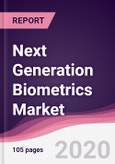What is Biometrics?
The identity of a persons based on certain physical or behavioral characteristics is recognized and authenticated by the biometric process. A person can be uniquely identified by evaluating one or more distinguishing biological traits through biometric verification. The uniqueness of a person can be identified from different types of biometric technologies such as fingerprints, signature, palm recognition, face detection and record of their voice. This data is then compared to the biometric data of several other persons kept in a database to authenticate a person’s identity.
With the help of this biometric technology, the government agencies are able to solve crimes, prevent fraud in voting or public benefit applications, secure national borders, or protect identities for a variety of other applications, such as access control, banking and employee background checks.
What are the applications of Next Generation Biometrics?
Next generation biometrics introduced has applications in government organizations such as the biometric enrollment and management of a population's biometric data call for a tightly regulated legal and technical, Civil Identity, population registration and voter registration framework, Law enforcement and biometrics, Biometrics and border control, Healthcare and subsidies. In border control applications, biometric authentication is done by comparing the fingerprint(s) read with the fingerprints in the passport micro-controller. If both biometric data match then the authentication is confirmed. In the recent days, facial-recognition technology has been used by law enforcement to pick out individuals in large crowds with considerable reliability.
Next Generation Biometrics Market
Market Research and Market Trends of Next Generation Biometrics:
Mastercard, which introduced the first biometric card, is on a mission to eliminate the use of passwords. In 2018, Mastercard introduced a technology advancement for its biometric cards. This technology aids people to easily and conveniently register their fingerprint onto the biometric card at home without the need of making trips to bank. The card consists of a sensor which scans the fingerprint and an encrypted digital template is created and securely stored. The biometric payment is turning into a reality due to the advancement in technology as the card draws power from the payment terminal and hence can be used anywhere.
In 2018, intuitive biometrics introduced Tascent MX, a latest family of mobile biometric devices which combines advanced iris, fingerprint, and face biometrics with smartphones for a wide variety of identity registration and authentication applications. Tascent has partnered with OtterBox, to support a broad range of smartphones across multiple operating systems. Tascent MX has multimodal biometrics and multi generation mobile capabilities and also offers identity verification that is secure, scalable, accurate, and easy-to-use.
The US Army’s Electronic Warfare & Sensors division has introduced the ‘Next Generation Biometric Collection’ which is being designed to collect fingerprint and iris data and also a sophisticated face detection system. It is believed to operate through a more compact and lightweight form factor, and will be more rugged. The research lab is also working to develop DNA and voice biometrics technologies and is exploring how to utilize these biometric identification systems on an automated, contactless basis that does not require a human operator.
SOCOMs is exploring the use long range facial recognition technology in both portable and hand-held form factors. Their focus is to develop devices to match individuals against a watch list, edit the list and must be suitable to operate in challenging conditions and environments. It also intends that the devices should operate offline and further update records when a network connection is available. SOCOM is also keen in utilizing facial recognition software, as well as chemical forensic and non-GPS navigation technologies.
Who are the Major Players in Next Generation Biometrics market?
The companies referred in the market research report are Fujitsu Ltd., 3M, Fulcrum Biometrics, and Cross Match Technologies, Inc. and 10 others.
What is our report scope?
The report incorporates in-depth assessment of the competitive landscape, product market sizing, product benchmarking, market trends, product developments, financial analysis, strategic analysis and so on to gauge the impact forces and potential opportunities of the market. Apart from this the report also includes a study of major developments in the market such as product launches, agreements, acquisitions, collaborations, mergers and so on to comprehend the prevailing market dynamics at present and its impact during the forecast period 2018-2023.
Key Takeaways from this Report
- Evaluate market potential through analyzing growth rates (CAGR %), Volume (Units) and Value ($M) data given at country level – for product types, end use applications and by different industry verticals.
- Understand the different dynamics influencing the market – key driving factors, challenges and hidden opportunities.
- Get in-depth insights on your competitor performance – market shares, strategies, financial benchmarking, product benchmarking, SWOT and more.
- Analyze the sales and distribution channels across key geographies to improve top-line revenues.
- Understand the industry supply chain with a deep-dive on the value augmentation at each step, in order to optimize value and bring efficiencies in your processes.
- Get a quick outlook on the market entropy – M&A’s, deals, partnerships, product launches of all key players for the past 4 years.
- Evaluate the supply-demand gaps, import-export statistics and regulatory landscape for more than top 20 countries globally for the market.
Table of Contents
Samples

LOADING...
Methodology

LOADING...








